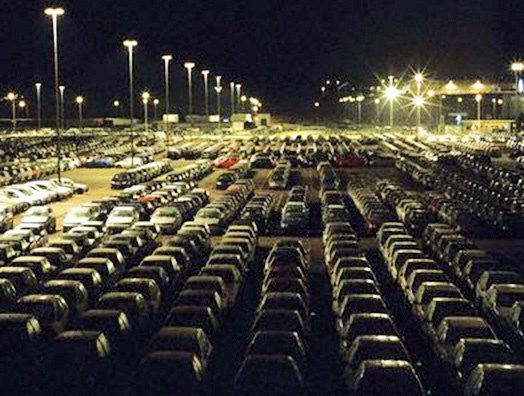Axis Communications: how to select the right camera system
Axis Communications: how to select the right camera system. When we think about a camera’s image quality, it’s not unusual to think in terms of pixels and megapixels. The consumer ...



Axis Communications: how to select the right camera system. When we think about a camera’s image quality, it’s not unusual to think in terms of pixels and megapixels. The consumer camera and mobile phone market is especially focused on image resolution as the main indicator of quality. As a result, the megapixel benchmark has carried across into the surveillance industry, and this means that network cameras are being selected based on only the narrowest criteria. This can mean the camera is incompatible with its function, and cannot provide the image quality required by the user.
More megapixels don’t necessarily mean clearer and more usable images. This is especially true in ultra low or high-level light, conditions for which cameras must be optimised. Megapixel cameras give varied results depending on what they are used for, and so, contrary to popular belief, high-quality images cannot be guaranteed. This means that security cameras are likely to produce lower-resolution images than expected, making them less usable for activities such as face or registration plate recognition.
All This Talk About Image Quality – Isn’t Usability the Real Issue?
By far the most important consideration when purchasing a new surveillance camera is that the images it produces must be clear and usable – and don’t merely satisfy an arbitrary technical requirement. Users of surveillance cameras need the best image quality out there for their specific usages, and have been led to believe that the best is represented merely by pixel number. This just isn’t the case.
While megapixel cameras are perfect for overview surveillance (in banks and transportation hubs, for example), one of their current drawbacks is the large size of the recorded video data. Because of the size of the data, it is common to choose a limited frame rate or lower resolution in order to stay within the specified storage limitations of an application.
Furthermore, megapixel sensors contain smaller pixels than standard sensors, and are thus not as good at handling low light conditions. This has a negative impact on the video images, which become either blurry or less detailed - so more megapixels, surprisingly, can mean reduced picture quality.
The resolution technology the end-customer finally chooses should not depend on the number of pixels but upon a number of factors:
- What type of surveillance system will be installed?
- Is overview or high detail required?
- Which area needs the surveillance camera to cover?
- What are the lighting conditions (e.g. daylight or night time, light sensitive areas, etc)?
- Where is the camera mounted (indoor or outdoor)?
- Is overt or covert surveillance required?
- Is there a risk of vandalism?
Only by carefully analyzing the video surveillance goals can the exact requirements for the installation can be defined. To optimize an installation the whole system needs to be considered, as factors like video management software, network capacity and video storage requirements often set limits for resolution and frame rate. No single type of camera is optimal for every application. This is also true when it comes to image resolution.
Resolution Technologies for Superior Image Quality
Whilst megapixels can contribute to greater image quality, there are other resolution technologies available like HDTV or standard VGA that are greatly improving surveillance cameras.
High Definition TV (HDTV) Resolution
HDTV constitutes a tremendous leap forward in image quality by providing up to five times higher resolution than standard analog TV. This means sharper images, better color fidelity and a wide screen format, i.e. 16:9 ratio. Developments in HDTV are now starting to have an impact on the video surveillance market, as customers seek a higher image quality standard.
The possibility of clearer, sharper images is a long sought-after quality in the surveillance industry, particularly in situations where objects are moving or accurate identification is vital. Working with progressive scan, network cameras with HDTV performance deliver true color representation and clear images even if the object is moving fast. This makes it a highly attractive solution for surveillance operations where greater image detail is required, such as at retail stores, airports, passport controls, casinos and highways. This quality development has been long sought after, but it could not be realized until the video compression techniques were efficient enough.
Standard VGA Resolution
Even with the advantages provided by megapixel and HDTV cameras, there are many application areas where standard resolution network cameras provide the best solution. Standard resolution is usually VGA (Video Graphics Array) resolution (640 x 480 pixels). It is a graphics display system for PCs originally developed by IBM.
The VGA resolution is normally better suited for network cameras since VGA based video produces square pixels that match with those on computer screens. In scenes with difficult lighting, there are standard resolution cameras with extreme light sensitivity and wide dynamic range that provides image usability well beyond what an HDTV or megapixel network camera can typically achieve in those conditions.
Some cameras provide frame rates higher than the traditional 25/30 frames per second offering the perfect solution to capture fast moving objects. When optimizing the video surveillance installation, it is critical to take the whole system into account, and not just the cameras. Video management software, network capacity and video storage requirements often set limits for resolution and frame rate, and standard resolution cameras can often become the most cost-efficient solution.
H.264 Compression Technology – A Key Enabler for Superior Image Quality
One factor that is common to all three resolution technologies is video compression. Video compression reduces or removes redundant data, enabling a significant reduction in file size. In this way, video files can be efficiently sent over a network or stored on computer disks.
H.264 is the latest and most efficient video compression standard. H.264 reduces the size of a digital video file by more than 80% compared with the Motion JPEG format and as much as 50% more than with the MPEG-4 standard. H.264 was a prerequisite for introducing HDTV in video surveillance and it is expected to accelerate the adoption of megapixel cameras since the highly efficient compression technology can reduce the large file sizes and bit rates generated without compromising image quality.
This means that either much less network bandwidth and storage space are required for a video file, or much higher video quality can be achieved for a given bit rate.
Making the Right Choice
With high resolution follows huge amounts of image data, which more often than not leads to compromises on frame rate. A megapixel camera alone is therefore not synonymous with high image quality – other factors such as the H.264 compression standard are equally important.
Dominic Bruning, Marketing Director, EMEA at Axis Communications insists that surveillance requirements must inform the purchase of camera equipment at every stage. “The selection of the right network camera must consider a number of different factors, including function, position, lighting and available bandwidth. Therefore, it’s more relevant to consider image usability – “do the images produced by this equipment satisfy my requirements?” – than image quality or technical specification,” he explains.
“That way, you’re always keeping the end-user’s needs at the forefront of the selection process.” For further reading on image usability and how to make the most of the unique benefits of each different type of network camera he recommends having a look at: http://www.axis. com/imageusability/
Contact:
Dominic Bruning
Axis Communications,
Preston, UK
Tel.: +44 870 1620 047
Fax: +44 870 7778 620
dominic.bruning@axis.com
www.axis.com
most read

Security management, building security & perimeter protection: the winners of category E at the GIT SECURITY AWARD 2026
GIT SECURITY AWARD 2026: Security management, building security & perimeter protection - an overview of the most innovative solutions

Machine & plant safety: The winners of category A at the GIT SECURITY AWARD 2026
GIT SECURITY AWARD 2026: Machine & plant safety - an overview of the most innovative solutions

Video security & video management: the winners of category C at the GIT SECURITY AWARD 2026
GIT SECURITY AWARD 2026: Video Security & Video Management - an overview of the most innovative solutions


GIT SECURITY AWARD 2026 - The winners have been announced!
GIT SECURITY AWARD 2026: The best safety and security solutions of the year - now an overview of all winners








